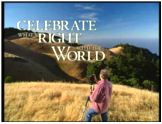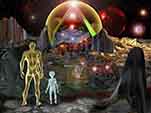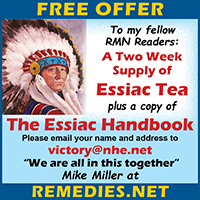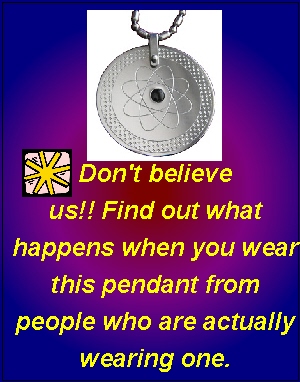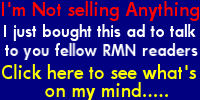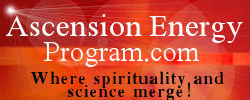Here is somebody else with a similar idea!
Hey, this is an idea whose time has come!!!!
http://www.madashellclub.com/
TAX MONEY Ė NOT PEOPLE
EMANCIPATION PROCLAMATION
The average American taxpayer is under bondage. He or she must work one third of the year to meet their tax obligation. Failure to do so will result in dire circumstances in the form of penalties, fines, forfeiture of personal property, and possibly incarceration in a penal institution. To rectify this form of part time slavery it should be proclaimed: NO TAX OR LEVY SHALL BE PLACED UPON A PERSONS INCOME OR PERSONAL PROPERTY.
WE NEED
A TAX FOR THE TWENTY-FIRST CENTURY
PROPOSED LAW:
A tax of one tenth of one percent shall be levied on all transactions having a monetary value.
INCLUSIONS
All transactions either in cash, checks, electronic transfers, credit lines, transfers of goods or properties, stock certificates, securities, transfers of assets between business entities etc.
EXEMPTIONS
No exemptions to any individual, corporation, or agency including governmental, quasi-governmental entities, nonprofit corporations, fraternal or religious institutions.
This concept is explained in a similar proposal that was made in 1988 by a tax lawyer by the name of John A. Newman. It was reported upon by the Congressional Research Service of the Library of Congress. His proposal was for a tax upon all transactions going through the FED banks. This new proposal uses the same concept without the limitations of Mr. Newmanís proposal. A copy of his report is available through your congressman. Ask for CRS REPORT CONGRESS
This web site is intended to be a source of factual information. Any conclusions reached are based upon information provided by the Federal Reserve System, the Internal Revenue Service and the Congressional Research System of the Library of Congress. I offer no personal opinions. Each individual should examine the documents for him or her self and either agree or disagree with my assessments.
The present tax code is a mish mash of systems that were instituted in the past and have remained because it is in the interests of those whose influence has the strongest voice in the Congress. They strongly resist any change from a status quo that serves them well. The United States, and all the other industrialized nations in the world are all in similar situations. There is too heavy a burden placed upon the middle class.
For the past six years I have been advocating a new concept that is especially suitable for the twenty-first century technology. The principle of this concept is so simple that it can be stated in these four words TAX MONEY NOT PEOPLE.
It is a fundamental premise that the larger the tax base the smaller the tax rate has to be in order to raise a determined amount of money. The total money raised in the United States by taxes in 1997 was one and a half trillion dollars by the Federal government from all sources including social security. The states and localities raised slightly more than one trillion dollars in 1997. The total of the two comes to about two and one half trillion dollars. The gross domestic product in the United States for 1997 was slightly more than eight trillion dollars. If we used the total of the domestic product as a tax base the money needed to raise the requirements of the federal, state, and local taxes would be about thirty percent. According to figures from the Annual Report of the Board of Governors of the Federal Reserve System 555 trillion dollars moved through the FED banks in 1998. This figure is up 151 trillion from 1995 when the figure was 394 trillion. The 1998 figure is about seventy times the GDP, which is about 8 trillion dollars. In addition to this 555 trillion dollars all of the money in stock market transactions, vertical corporate transfer of goods or services between subsidiaries of corporations and holding companies, plus all of the transactions in corporate acquisitions and mergers would be included. The movement of monies in and out of the stock and money markets etc. would make up a tax base so large that it would raise more than the 2.5 trillion dollars we now raise, with a tax rate or "user fee" of only one tenth of one percent or less. To solve the problems that the world is facing will not only require a willingness and political resolve it will require a lot of money.
The present tax code as well as those that have been advocated to replace it are all inadequate. A tax or "user fee" of one tenth of one percent will generate one billion dollars for each trillion dollars traded. The wealth that has been created should be beneficial to all of society. I cannot think of any deal or transaction that would be hindered by levying one tenth of one percent on the monetary value of the deal or transaction. The stock market has evolved into a huge gambling casino. Day traders move huge amounts of money. Sometimes overnight or many times in one day. This is the kind of activity that brings instability and fragility causing the huge fluctuations that continue to take place. The implementation of a "user fee" would have a beneficial effect upon the investor who is looking for long-term gains. No longer would investors have to pay capital gains taxes or profits taxes.
Article 1. Section 8 of the Constitution gives Congress power to raise taxes. It does not specify what to tax, this is left to the discretion of the Congress. Article 16 of the amendments to the Constitution gives Congress the power to tax incomes; this article was added because the Supreme Court had ruled it was unconstitutional to tax incomes. However, it is not binding upon Congress to exercise this power. When first enacted the income tax only applied to incomes above seventy five thousand dollars with a tax rate of only three percent. The present tax rates attest to the fact that Congress can abuse the powers that it receives. There has to be a better way. I believe there is,
TAX MONEY NOT PEOPLE
The proposal for a transaction tax "user fee" made in 1988 was limited to bank transactions only. It was estimated that it would raise 11 billion dollars with a rate of one two-hundredth of a percent on the 220 trillion dollars that moved through the FED in that year. I propose using the same concept and remove the limitation making it applicable to all transactions having a monetary value and raising the rate to one tenth of one percent more or less. This Report for Congress by the Congressional Research Service can be obtained from any congressman. Ask for CRS Report for Congress 88-103 E. In addition it would be well to ask for CRS Report for Congress titled Money and the Federal Reserve System: Myth and Reality. This report deals with how money is created by the banking system by means of fractional reserve banking system used in the United States.
There is an article in the January 1993 edition of the National Geographic magazine titled "The Power of Money" by Peter T. White. T his article explains exactly how the FED system of money creation works. A copy is available for $5.00 from National Geographic single copy, P.O. Box 6001, Tampa FL, 3366.
The essence of the transaction tax is that it is not a tax upon any commodity or real property. It is a small fee paid for using the currency of the United States. It does not tax the money a person or entity has until the money is moved. To the average worker it amounts to a fee of one dollar for each thousand dollars earned or spent. A taxpayer who earns forty five thousand dollars a year is taxed over four thousand dollars with the present tax code; under the "user fee" he would pay a maximum tax of ninety dollars if he spent all the money he earned. If he did not spend it all he would pay no tax on money that remains in the bank. This concept will derive revenues in proportion to a personís wealth.
For comments or questions send an e-mail pbottissr@aol.com. To receive a copy of a chart from the annual report of the Federal Reserve Board of Governors, which shows how much money, moves through the FED. Send a SASE to Paul Bottis 11 Maranda Street Worcester MA 01604
